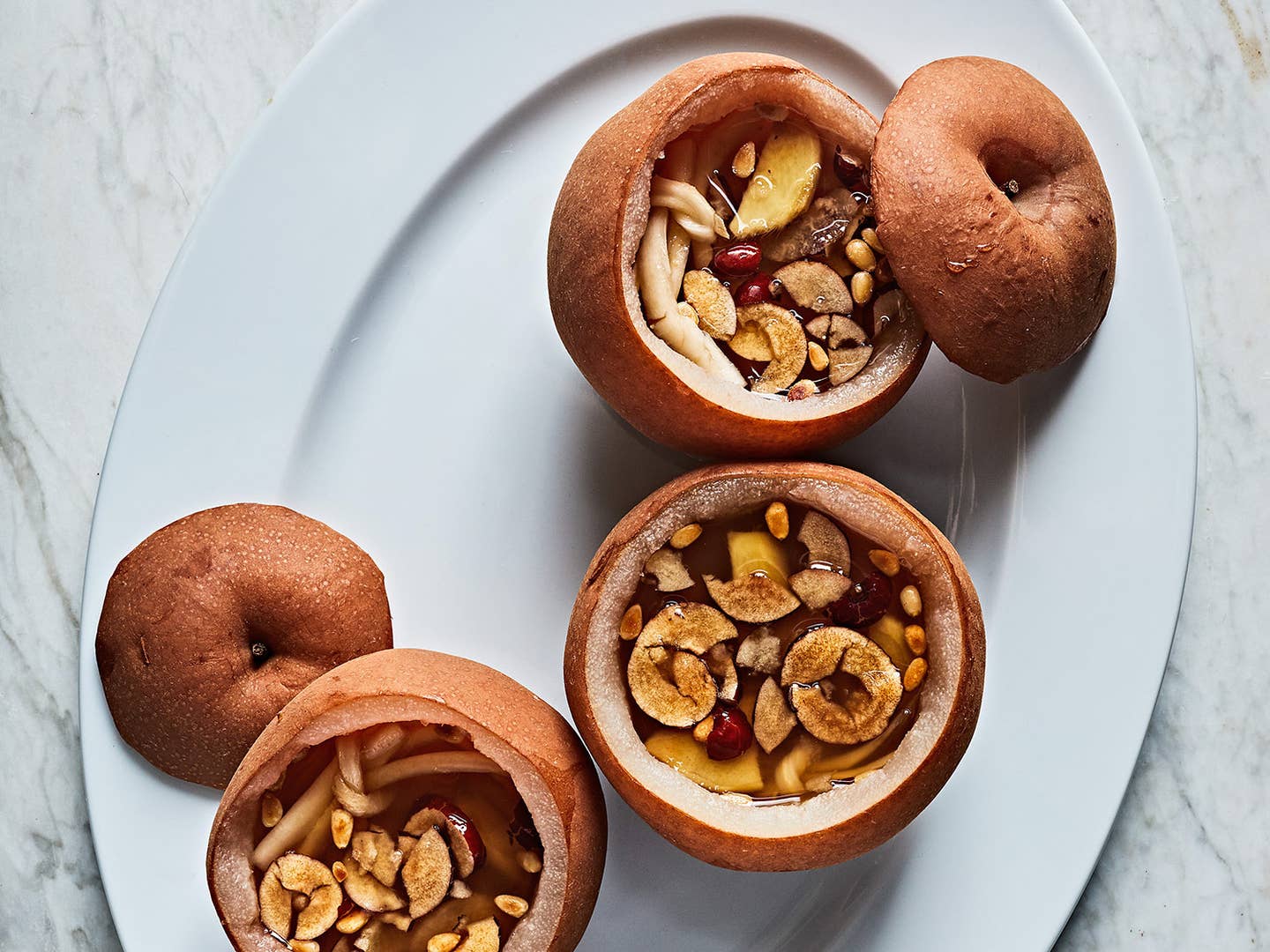
This Poached Pear Has Ancient Roots in the Palace Food of Korea
My earliest memory of this dish takes me back to my childhood: Daegu South Korea, me in my coziest blanket, excitedly waiting for my mother to make a warm bowl of steamed pear that’ll instantly melt through the coldest of winters. She would often make it for anyone in the family who was feeling under the weather. It was almost worth getting sick if it meant I could start my day with a sweet, hearty bowl of soft pear for breakfast.
The name beajungtang literally translates to bain-marie pear because it is as simple as cooking the pear in a water bath. The recipe dates back to the Joseon Dynasty when it was often prepared as a part of the traditional Korean palace food. In the palace, it would often be served towards the end of the meal almost like a dessert amongst other sweet drinks like cinnamon-ginger punch and sweetened rice drink. It wasn't until much later that it was widely consumed by ordinary people. Nowadays, the dish is usually made at home since it requires very little preparation, and will only be served in traditional Korean restaurants. Like most traditional recipes, it uses ingredients with medicinal properties. Traditional herbs, mostly native to East Asia, that have been blanched and lightly seasoned are a staple side dish at any Korean restaurant or household. Some of these herbs include short-fruit pimpinella, mungbean, braken, wild chives and bellflower root.
Recipes for beajungtang vary between regions and families, but almost all of them have the same five basic ingredients: pear of course, jujube (red date), ginger, bellflower root, and honey. The pear used in the recipe must be a variety of Asian pear from East Asia as these pears tend to be much bigger - which is important as we also use the pear as an edible bowl - and much crunchier in texture to allow the pear to keep its shape in high temperatures and not turn into mush. The Asian pear is well known for its cooling and hydrating properties whereas the bellflower root, which produces a chemical compound called saponin, is often used for medicinal purposes to boost the immune system.
Jujubes, sometimes referred to as Chinese dates, are known to pack 20 times more vitamin C than any citrus fruit and despite its exotic name, they are very easy to spot at any local Asian stores usually sold dried. The warm juice produced in the pear as it cooks helps to prevent common flu symptoms such as sore throat, high fever, and coughing. The pine nuts are lightly toasted then added for garnish at the end for extra crunch.
Although the dish is known for its “healing” and restorative qualities, whenever I crave beajungtang, it’s rarely because I’m in need of homemade cough syrup. Any time I want to indulge a sweet craving without feeling guilty about it, this dish is the perfect alternative: a wholesome, nectarous bowl of perfectly tender pear and velvety dates infused with a hint of warm ginger. Not only does this satisfy my sweet tooth; it is one of the very few nostalgic recipes that takes me back to my childhood. After moving from the tropical climate of Indonesia to frigid New York, the long winter months sometimes remind me how far I am from home and makes me miss it more than I would like. When I feel homesick, I turn to recipes like this that can comfort me both inside and out.
Keep Reading
Continue to Next Story










